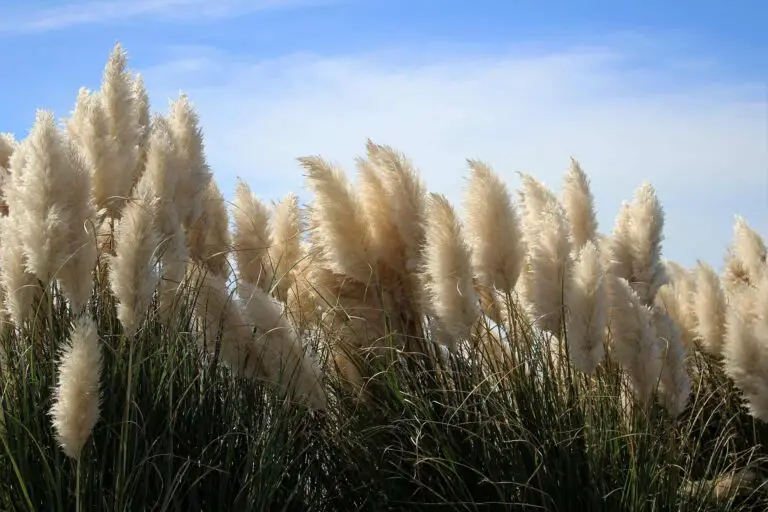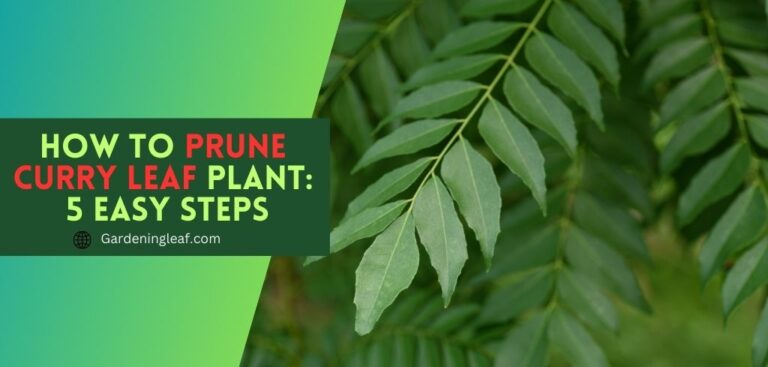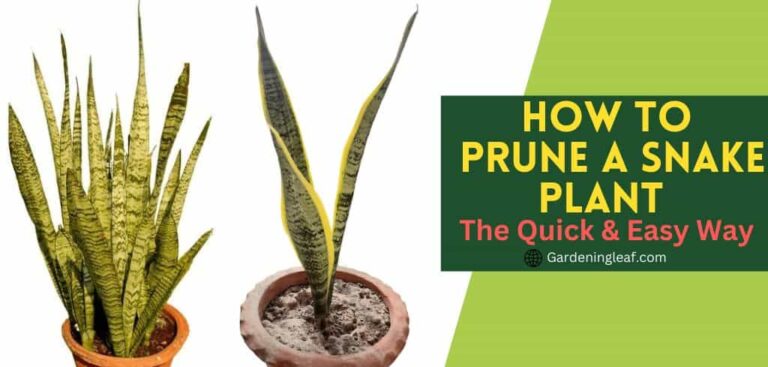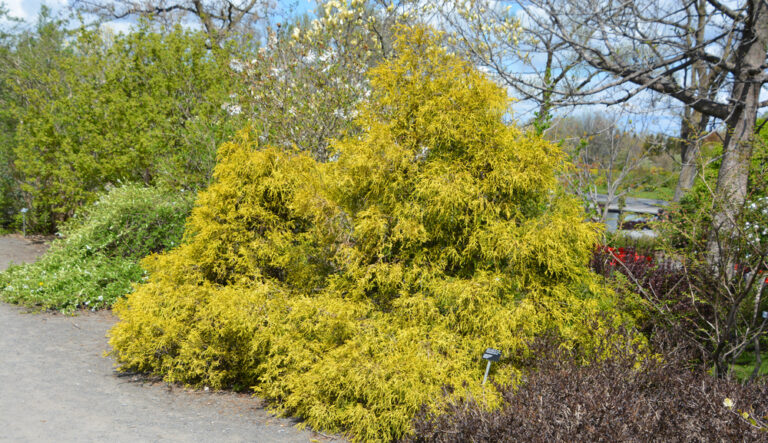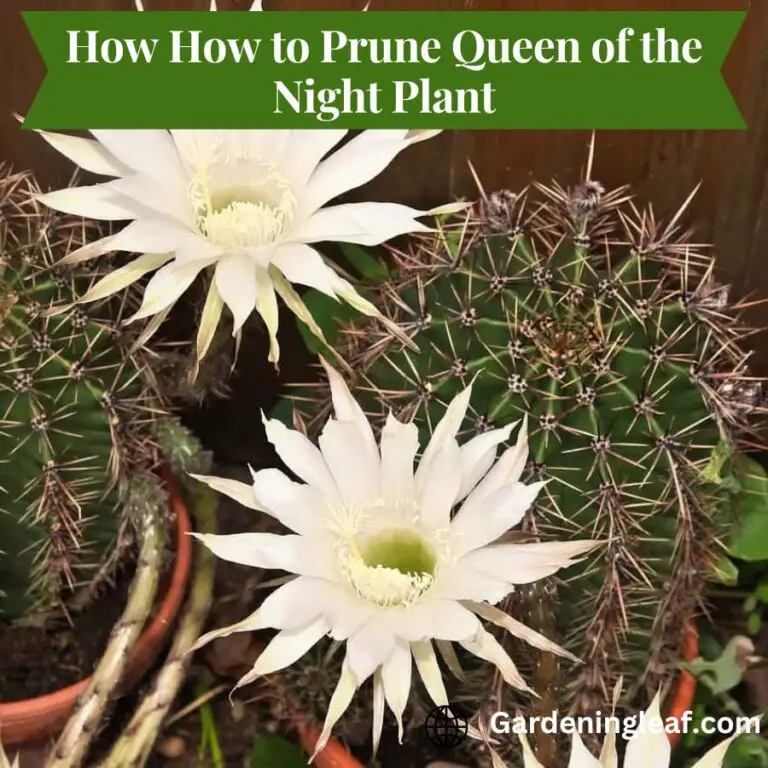unlock the Secrets to Pruning Oak Leaf Hydrangeas Like a Pro: Expert Tips for Lush Blooms
Oak Leaf Hydrangeas are a treat to the eyes with their long-lasting, showy blooms and beautiful foliage. But, to keep them looking their best, it is important to prune them at the right time and in the right way. Purging promotes healthy development and flower production by maintaining the plant’s structure.
We will discuss a guide to when to cut back oak leaf hydrangeas . And share essential care tips about oak leaf hydrangea pruning. Share some common problems you might face while growing them and how to overcome them.
Understanding the Oak Leaf Hydrangea
The oak leaf hydrangea stands out in any garden due to its unique characteristics. Its gorgeous blossoms make it an evergreen shrub that adds beauty to any landscape.
Its large, oak-shaped leaves provide texture and interest. This makes it a popular gardening option. Pruning the oak leaf hydrangea shapes the shrub and promotes healthy growth for the next season.
Origins and Characteristics of Oak Leaf Hydrangea
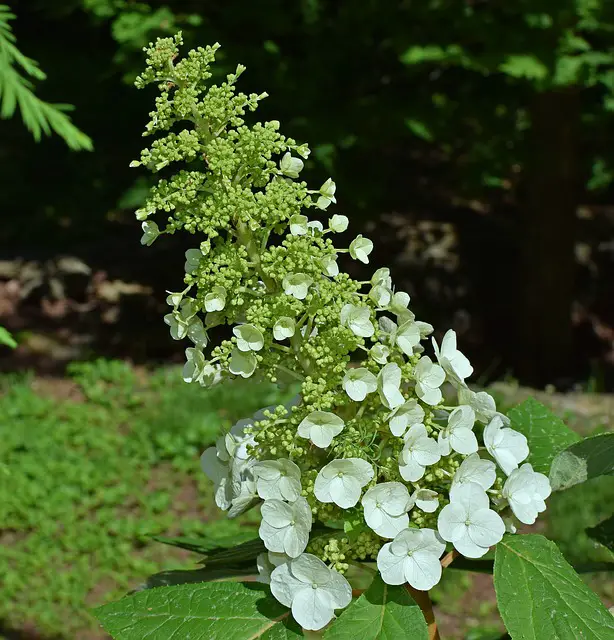
The oak leaf hydrangea is scientifically called Hydrangea quercifolia and is native to the southeastern United States. It has a deciduous shrub that grows up to 6-8 feet.
Its shrub loses its leaves in the winter. These shrubs boast large and showy flower clusters. They are known as panicles, adding striking visual appeal to any garden.
The oak leaf hydrangea does best in wooded areas with some shade. It blooms from early summer to late summer, putting on a beautiful show of flowers during this time.
Read More: – How To Prune Queen Of The Night Plant
Oak Leaf Hydrangea pruning
Regular pruning is essential to keep your Oak Leaf Hydrangea looking its best. Follow these tips for proper pruning:
Timing
Prune oak leaf hydrangeas in late winter or early spring. Pruning during this time gives the plant time to heal and grow new leaves without stopping the blooming.
To preserve next year’s flower buds, it is advisable to refrain from pruning during the late summer or fall. Pruning too early in the season may result in frost damage to the new growth.
Benefits of Pruning
Pruning oak leaf hydrangeas offers many benefits for their health and appearance.
- Getting rid of dead or sick wood can stop pests and diseases from spreading and help your plant live longer.
- Also, trimming encourages the growth of new flowers and makes the shrub larger and more compact.
- It also improves airflow, which makes fungal diseases like white mildew less likely.
- Regular trimming lets more light in, making the flowers healthier and more colorful.
So, get out your pruners and enjoy the many benefits of trimming your oakleaf hydrangea correctly.
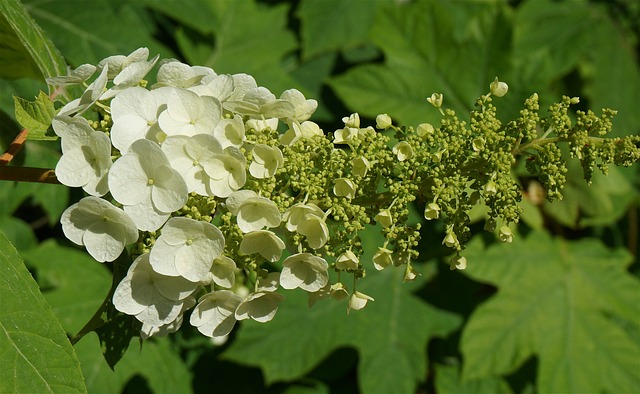
Guide to Oak Leaf Hydrangea Pruning
Pruning your oak leaf hydrangea is a simple and rewarding task. Following these step-by-step instructions will ensure that you achieve the best results:
- Start by removing any dead or damaged branches. You can easily recognize these by their absence of leaves or any indications of deterioration. Use sharp pruning shears to create precise cuts above a thriving bud or side branch.
- Trim out the interior branches to improve airflow and sunlight penetration. Removing crossing or crowded branches and those growing towards the shrub’s center. It prevents fungal diseases and improves plant health. When pruning, maintain the natural shape of the plant. Pruning at this time will shape the shrub. It also stimulates more blooms in the upcoming season, especially the following year.
- Prune some older branches to encourage new growth and more flowers. Look for branches that are weak or have fewer blooms compared to others. Trim them down to a thriving bud or side branch, keeping approximately a quarter-inch above it.
- To manage an overgrown oak leaf hydrangea. Trim the outer branches to maintain a compact shape and prevent it from overpowering your garden.
- After completing the pruning process, give your oak leaf hydrangea a good watering. This will help it recover from pruning stress and promote healthy growth.
Clean your pruning shears before and after use to prevent spreading diseases or pests. Additionally, dispose of any pruned branches properly to avoid potential contamination.
Oak leaf hydrangea pruning should be done in early spring to allow the shrub to produce buds for the following year. But you can always trim away damaged or diseased branches anytime.
It is critical to prune on all sides of the plant to look well-balanced and not end up far too heavy on one end.
If you notice any dead or diseased branches or broken branches, remove those as closely to the main stem as possible. This will help keep the plant healthy and thriving.
Also Read: – How To Prune A Snake Plant
Essential Care after pruning
You should follow several essential care practices to ensure optimal health and growth for your oak leaf hydrangeas.
Sunlight Requirements
Oak leaf hydrangeas need partial shade to full sun and at least six hours of daily sunshine. Shading during the hottest part of the day protects leaves from scorching.
Soil Conditions
To help oak leaf hydrangeas thrive. It needs well-draining soil and is rich in organic matter. Adding compost or peat moss to heavy clay soils can improve drainage and provide nutrients. Maintaining a slightly acidic soil pH of around 5.5-6.5 is important for optimal growth and flower production.
Watering
After pruning oak leaf hydrangeas, water the plants adequately to maintain a regular moisture level in the soil. Ensure the water reaches the root zone by watering thoroughly. Wait for the top inch of soil to dry before watering again.
Fertilizing
After pruning, it’s a good idea to fertilize to provide the nutrients. Slow-release fertilizer formulated for hydrangeas, ensuring it provides a well-balanced nutrient blend. Spread the fertilizer around the plant’s base when applying it. Be careful not to let it directly contact the stems or foliage.
Mulching
Putting a layer of organic mulch around your plant can help keep the soil wet. It Prevents weed growth and maintains optimal root temperature. Choose a natural mulch, like shredded bark or compost, and spread it around the plant’s base. When making mulch, leave space around the roots and replace the mulch annually for optimal performance.
Pest and Disease Control:
It is important to monitor indications of pests or diseases closely. Aphids, scale insects, spider mites, powdery mildew, and leaf spot diseases are encountered problems. If any of these issues are observed. Taking necessary actions to manage and prevent further harm is crucial.
Winter Protection:
It is crucial to make preparations for the colder months before winter arrives. Applying a layer of mulch around the shrub’s base. Which will provide insulation for the roots and prevent them from being damaged by frost. Also, consider wrapping the plant with burlap or using a protective cover as an extra shield.
Also Read:- How To Propagate Nerve Plant
Overcoming Common Problems
Oak leaf hydrangeas are generally hardy and low-maintenance plants. But sometimes, a few issues may occur. Awareness of the problems, and you are taking preventative action. You can ensure that your oak leaf hydrangea thrives in its environment.
- One common issue is improper pruning. To correctly prune oak leaf hydrangeas. Do so immediately after flowering. These plants bloom on old wood. So pruning in late summer or fall should be avoided as it can remove potential flower buds for the next year.
- Another problem that may arise is inadequate nutrients in the soil. For optimal growth, it is important to provide soil with good drainage and abundant organic material. Use a well-balanced fertilizer that has been developed specifically for use with hydrangeas.
- Incorrect watering techniques can lead to problems. These plants thrive in moist soil. It’s best to water deeply and regularly.
- Pests and diseases can also pose problems for oak leaf hydrangeas. If you find any signs of infestation, promptly treat them with organic insecticidal soap or horticultural oil.
- Powdery mildew and leaf spots can affect plants. To prevent these diseases, ensure proper air circulation around the plant. Remove and dispose of affected foliage if you see discolored or spotted leaves to prevent further spread.
- Lastly, winter protection is crucial in colder climates. These plants are resilient. But, they can enjoy having a mulch layer around their base to protect their roots from the cold during winter.
Different Types of Oak Leaf Hydrangea
1. Hydrangea quercifolia ‘Snow Queen
‘Snow Queen’ is a widespread variety of Oak Leaf Hydrangea. It is known for its abundant and attractive clusters of white flowers. The blossoms appear in late spring and early summer. The flowers gradually fade to a soft pink, creating a beautiful two-toned effect.
2. Hydrangea quercifolia ‘Alice’
‘Alice’ is another popular variant. Its cone-shaped flower clusters start white and turn pink as they mature. The foliage of ‘Alice’ is profoundly lobed and resembles the leaves of an oak tree, providing a unique texture to the plant.
3. Hydrangea quercifolia ‘Ruby Slippers’
A more compact version of the Oak Leaf Hydrangea, ‘Ruby Slippers.’ It offers outstanding fall foliage in shades of burgundy and purple. It is perfect for smaller gardens or containers. This variety still produces large, cone-shaped flower clusters despite its smaller size. That starts white and eventually turns a deep pinkish-red. The Ruby Slippers also showcase the beauty of autumn with their stunning deep red-to-purple leaves that linger well into winter.
4. Hydrangea quercifolia ‘Sikes Dwarf’
As the name suggests, ‘Sikes Dwarf’ is a dwarf variety of Oak Leaf Hydrangea. It reaches a maximum height of only 2-3 feet. This compact shrub is ideal for small spaces or as a border plant. ‘Sikes Dwarf’ produces lovely white flowers that age into a rosy pink hue. Its foliage displays stunning shades of red, orange, and burgundy in the fall.
5. Hydrangea quercifolia ‘Pee Wee’
Another dwarf cultivar, ‘Pee Wee,’ is a petite version of the Oak Leaf Hydrangea, reaching a maximum height of 3-4 feet. Despite its small size, this variety does not lack in beauty. ‘Pee Wee’ produces large, elongated flower clusters that transition from white to pink as they age. The foliage displays bronze and burgundy tones in the fall, adding warmth to the garden.
Also Read :- How To Prune Curry Leaf Plant
Can you use a hedge trimmer to prune oak leaf hydrangea?
Using a hedge trimmer to prune oak leaf hydrangea is not recommended. It has unique growth patterns, and using a hedge trimmer can result in uneven and improper pruning. It is best to use hand pruners or loppers to selectively remove dead or overgrown branches.
Conclusion
Oak leaf hydrangea pruning is a simple process if you do it correctly. Over-pruning can weaken the plant’s structure. It Increases vulnerability to diseases and pests. Correct and careful pruning promotes healthy growth.
Source :- https://plants.ces.ncsu.edu/plants/hydrangea-quercifolia/

